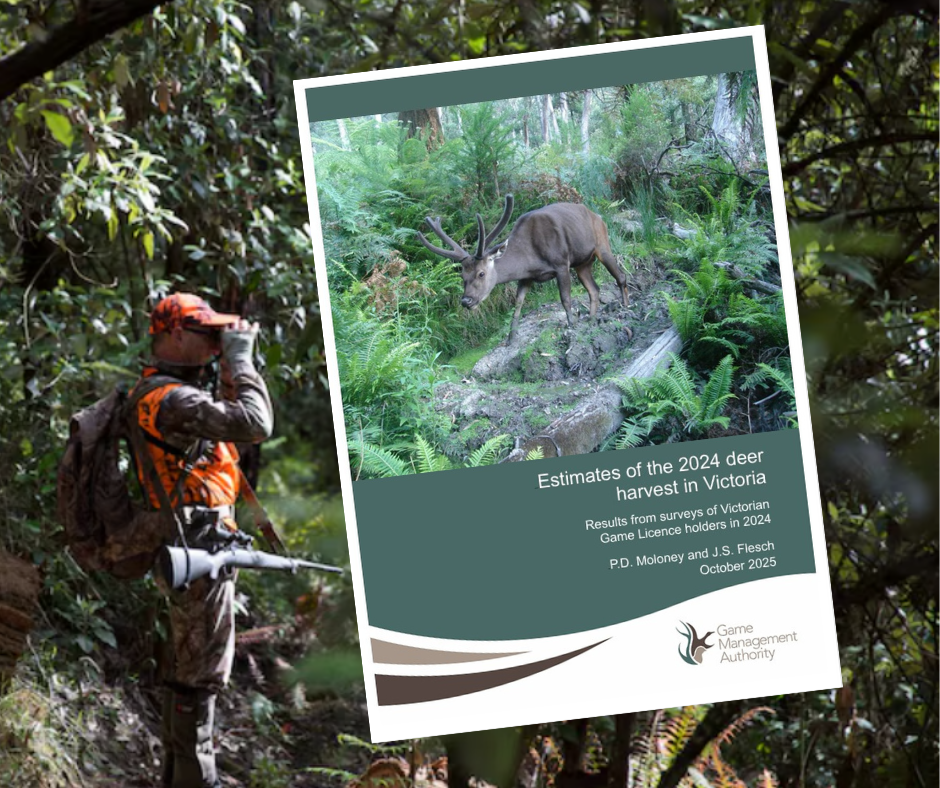Victoria’s recreational deer hunters harvested an estimated 167,600 deer in 2024, making it the second-highest harvest on record and more than all government-funded control programs combined.
The Arthur Rylah Institute’s latest survey, commissioned by the Game Management Authority, shows that while fewer hunters took to the field compared to 2023, those who did were more active and more effective – hunting more days and achieving higher success rates. On average, active hunters harvested 6.4 deer across 13.5 days, a 14% improvement on long-term averages.
Public land, female deer, and strong conservation outcomes
The report confirms that most of Victoria’s deer hunting occurs on public land, with half of all hunting activity taking place there – reinforcing the importance of public access for recreational hunting and wildlife management.
A striking and consistent feature of the harvest data is that the majority of harvested deer were female, a significant factor in slowing population growth. Sambar Deer made up three-quarters of all deer taken, followed by Fallow Deer at around one-fifth.
Hunters outperform government programs
The 167,600 deer harvested by recreational hunters dwarfs the numbers removed by taxpayer-funded control programs, again demonstrating that regulated, ethical hunting remains the most cost-effective and scalable form of deer population management available to the State.
“Recreational hunters are delivering results that no government program can match,” said SSAA Victoria Hunting Development Manager David Laird. “These figures highlight that hunters aren’t just participants in a pastime – we are an essential part of Victoria’s environmental and economic landscape.”
A $201 million boost to the Victorian economy
Beyond environmental outcomes, the deer hunting sector continues to generate enormous regional economic benefit. According to previous economic modelling by the State government, deer hunting injects more than $201 million into the Victorian economy each year and supports over 1,700 jobs, most in regional towns that rely on seasonal visitor activity.
Hunters as “Camo-Clad Ecotourists”
Hunting remains one of Victoria’s most widespread and economically valuable forms of nature-based recreation. Hunters spend heavily on fuel, accommodation, food, equipment, and guiding services across rural communities – delivering a sustainable form of “camo-clad ecotourism” that directly benefits local economies while contributing to biodiversity management.
The Big Picture
Since the surveys began in 2009, Victoria’s deer harvest has almost quadrupled, reflecting the combined effects of growing hunter participation and expanding deer populations. But with harvests like this year’s, hunters are demonstrating that they can be, and already are, a major part of the management picture.


